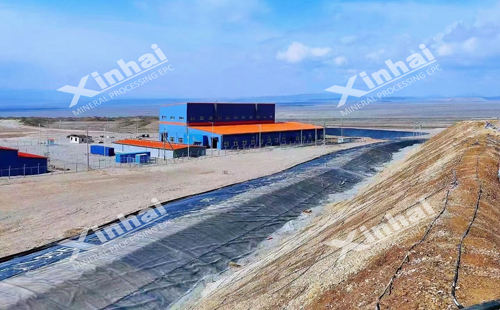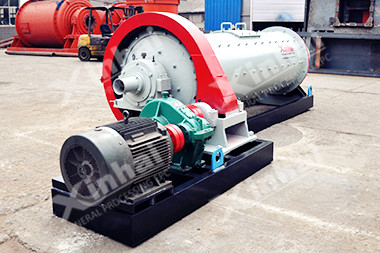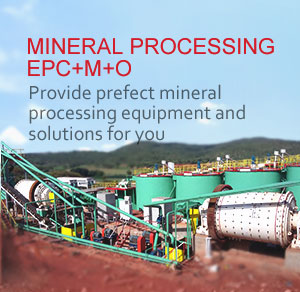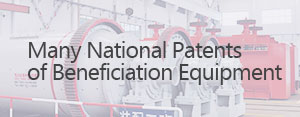- Home
- About
-
Mineral Processing EPC+M+O

Providing optimized solutions for your mine, one-stop service for mineral processing plant!
View details -
Product
- Grinding
- Classifying
Grinding & Classifying
- Flotation
- Gravity Separation Equipment
- Magnetic Equipment
- Gold Extraction Equipment
- Washing Equipment
Separating Process
- Thickening
- Dewatering Machine
Thickening & Dewatering
- Accessories
- Auxiliary Product
Consumables

Xinhai mineral processing equipment mainly include: grinding equipment, flotation equipment, dewatering equipment, magnetic separation equipment, and so on. Some of the equipment is Xinhai independent research and development, and has been awarded national patent. View details
-
Solutions
- Gold Tailings
- Tailings
Tailings

Gold CIP Production Line adsorbs gold from cyaniding pulp by active carbon including 7 steps: leaching pulp preparation, cyaniding leaching, carbon adsorption, gold loaded carbon desorption, pregnant solution electrodeposit, carbon acid regeneration, leaching pulp. View details
- Case
-
News
- Contact
Gold Heap Leaching: Technical Insights, Operational Strategies, and Future Directions
2025-04-30 XinHai Views (548)Heap leaching stands out as a versatile and cost-effective method for extracting gold from low-grade ores, but its success hinges on balancing a web of interdependent factors. Here's a breakdown of its core principles, challenges, and innovations—without the jargon-heavy fluff.
1. Operational Levers: What Moves the Needle
Ore Permeability
Think of permeability as the bloodstream of the heap. If the ore is too fine or clay-rich, it clogs like arteries, forcing solutions to channel inefficiently. Operators often pre-treat ore by agglomerating fines with binders like cement, creating porous “clumps” that keep the heap breathing. The sweet spot for particle size? Between 6–25 mm—large enough to let solutions flow but small enough to expose gold for leaching.
Chemistry's Tightrope Walk
Cyanide is the workhorse here, but it's finicky. Too little, and gold dissolution stalls; too much, and costs spiral. Maintaining 300–600 ppm of free cyanide while juggling pH levels (10.5–11.0) is non-negotiable to avoid toxic HCN gas. Lime does the heavy lifting here, stabilizing pH and keeping reactions safe. Oxygen is the silent partner—without at least 1–2 mg/L dissolved in solution, gold won't budge. Shallow heaps rely on natural aeration, but deeper ones need forced air via pipes or blowers to keep oxygen levels up.
The Art of Irrigation
It's not just about dumping solution on the heap. Spray rates of 10–20 L/h/m² are typical, but cycles matter. A 6-hour on/off rhythm allows the heap to “breathe,” enhancing oxygen diffusion and preventing waterlogging. Overdo it, and you drown the heap; underdo it, and leaching grinds to a halt.
Heap Height & Time
Height isn't just a space saver—it dictates pressure and contact time. Stacks of 6–10 meters strike a balance, but taller heaps risk compaction. Leaching isn't a sprint; it’s a 60–120 day marathon where patience pays off. Cold climates throw a wrench in this, though—heated solutions or insulated pads become essential when temperatures dip below 15°C.
Saboteurs in the Ore
Some ores fight back. Cyanide-hungry minerals like copper or “preg-robbing” carbonaceous materials can hijack the process. Solutions? Pre-treatment steps like roasting or adding blinding agents (e.g., kerosene) to neutralize troublemakers.

2. Monitoring & Adapting: Keeping the Heap Alive
Real-time adjustments separate good operations from great ones. Tracking gold in solution with atomic absorption spectroscopy (AAS) or sensors tells operators when to tweak cyanide doses or irrigation rates. If permeability drops, interventions like re-agglomeration or air injection revive flow. Pilot tests and column studies provide a roadmap, but field conditions—like unpredictable ore variability—demand constant recalibration.
3. Wrapping Up: From Heap to Closure
Post-Leach Cleanup
Once leaching ends, heaps get a “bath” to rinse residual gold and cyanide. Fresh water flushes out leftovers until effluent hits economic cutoffs. The spent ore then heads to tailings storage, often after detox treatments (e.g., lime for cyanide breakdown) to meet environmental standards.
Tailings: The Long Game
Long-term stability is critical. Engineered caps, drainage systems, and monitoring wells prevent acid rock drainage and groundwater contamination. Site rehabilitation isn't an afterthought—it's baked into the project design, with plans for capping, revegetation, and decades of monitoring.
4. Economics: Why Heap Leaching Wins (and Sometimes Doesn't)
Heap leaching thrives on low capital costs and scalability, making it a go-to for marginal ores. Operating costs hover around $2–10 per tonne, driven by cyanide, energy, and labor. But scale matters—small operations bleed profit if recovery rates dip or ore grades underperform. While slower than CIP/CIP, its cost profile makes it unbeatable for oxidized, low-grade deposits.
5. EHS: Walking the Compliance Tightrope
Cyanide safety is non-negotiable. Training, sealed storage, and HCN gas detectors are baseline requirements. Leach pads and ponds use HDPE liners with rigorous leak checks. Water management is a closed loop—evaporation ponds and treatment systems aim for zero discharge. Regulatory compliance (think ICMI Cyanide Code) isn’t optional, and community buy-in hinges on transparency during permitting.
6. The Future: Beyond Cyanide and Status Quo
Alternatives Gaining Ground
Cyanide's dominance is being challenged. Thiosulfate and glycine-based systems promise greener profiles for specific ores, though scalability and cost hurdles remain. Hybrid flowsheets—like heap leaching paired with CIP for middlings—are bridging the gap between efficiency and cost.
Innovations to Watch
Smart heaps: Sensors for real-time pH, moisture, and metal tracking.
Permeability boosters: Biodegradable binders or nutshell additives to combat compaction.
Precision detox: On-site cyanide destruction units to slash environmental risks.
How is Gold Processed Step by Step
... [more]
What is Lithium Processing Technology
... [more]
Related Article
- Gold CIP Process: Principles, Flowsheet, Plant Design, and Best Practices
- What Is the Difference Between CIP and CIL Gold
- How is Gold Processed Step by Step
- Gold Ore Beneficiation: Advancing Efficiency and Sustainability
- Gold Mining Equipment Costs: A Down-to-Earth Guide
- Gold Ore Gravity Separation Equipment
- Comprehensive Analysis of CIP in Gold Processing
- Affordable Gold Ore Processing Practical Guide for Growing Enterprises
- The Gold Processing Plant Cost
- Inspiration from Mali gold mine news: Gold Mining Management
Mineral Processing EPC
Solutions
CONTACT US
- Tel: 0086 15901320633
- Fax: 0086 10 59621207
- Email: mhxu@xinhaimining.net
© 2017 Shandong Xinhai Mining Technology & Equipment Inc. Technical Support: Beijing Xinhulian Technology Co., Ltd.
Factory Address: No. 188, Xinhai Street, Fushan high-tech industrial development district, Yantai, Shandong, China






